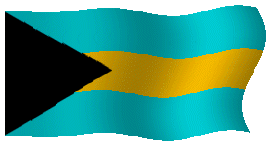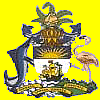 |






 








|
|
Migration
The Caribs in about 500 B.C. were quite a marauding bunch, often going on raids burning villages, torturing and murdering the males they encountered, and enslaving the women. As a result, the Caribs were responsible for forcing the migration of the Arawak Indians to the West Indies from their homes located on the banks of the Orinoco River. Over the following 500 years, Arawaks could be found not only in The Bahamas, but also in Haiti, Jamaica, and Cuba. Those living in The Bahamas were known as the lukku cairi or Lucayans and were of a very peaceful nature. (Murray, 1999, p.10)
Discovery
Just southeast of Florida there lies an archipelago of islands that span some six hundred miles. It is claimed that there are seven hundred of them - well, that’s counting every rock that sticks out of the ocean. These jewels, which were discovered by Christopher Columbus in 1492, witnessed the demise of the true natives, the Arawaks. The natives of these islands were diminished from an estimated 300,000 in 1492 to about 500 in 1550 due to brutal practices, enslavement, and diseases introduced to their homeland. (Murray, 1999, p.16)
Eleutherian Adventurers
The Islands of The Bahamas, having been depleted of the original inhabitants, remained uninhabited until 1647 when in a bold move by Englishman William Sayle, petition was made to the Government of the day on behalf of his company of Eleutherian Adventurers to acquire the island of Eleuthera, then called Ciguateo. With promise of religious freedom, land, and sharing of wealth and decision making, Sayle got 26 of his proposed 100 investors to commit to this bold relocation plan. They landed on the island and helped produce one of the first self-rule governments in the region.
Loyalists
By 1773 the population of The Bahamas had grown to 4,000, and the years that followed led to the signing of the Declaration of Independence in the United States in 1776. Many Americans maintained their loyalty with England, but those living in Florida were given time to leave after the revolutionary war in 1783. Most of these traitors, as they were regarded, were given land in the Bahamas. With them, they brought slaves in great numbers, and dramatically increased the population of the islands of The Bahamas.
Slavery
and Emancipation
Slavery did not officially end until emancipation in 1838. This, however, did not stop the racial bias that existed towards Negro slaves even in The Bahamas. Although blacks had outnumbered whites 2 to 1, the inferior self-image had taken root. Ironically, depending on the shade of your blackness, there were social implications. This fact is one that has survived even today among blacks the world over.
Independence
In 1964, the road to independence was well on the way when the Bahamas obtained internal self-government through constitutional change. Independence was finally achieved in 1973 under the Progressive Liberal Party led by the late Sir Lynden Oscar Pindling. The milestone was celebrated with a grand ceremony on Fort Charlotte in the city of Nassau, where the Union Jack of Great Britain was lowered and the Bahamian flag hoisted took center stage. The national anthem composed by the late Timothy Gibson filled the air, celebrating the birth of a new Bahamas.
|
|






